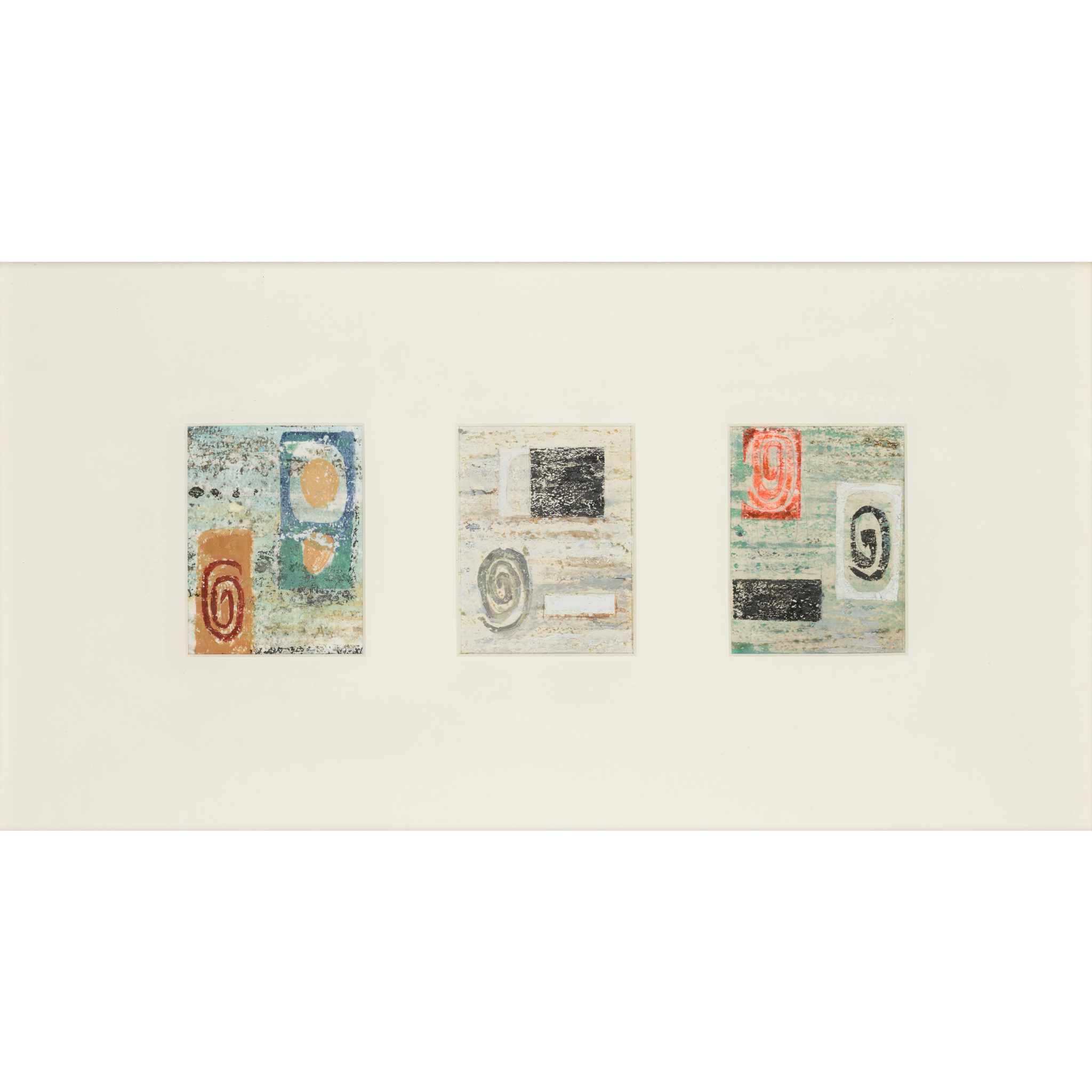JOHN PIPER (BRITISH 1903-1992) §
THREE STUDIES STUDY FOR WATSON HOUSE MURALS
£2,772
Auction: 15 JANUARY 2025 FROM 10:00 GMT
Description
crayon, pencil, watercolour and gouache with wax resist on paper
Dimensions
11.8cm x 9cm (4 5/8in x 3 ½in) each
Footnote
The following lots (260 – 275) represents the most complete collection of studies by John Piper for his landmark commission to decorate the exterior of Watson House in south-west London.
After the nationalisation of the gas industry post-war, the newly-formed North Thames Gas Board redeveloped a site on the banks of the river that had previously been the offices of the Gas Light and Coke Company, building Watson House in 1959 – at the time a very modern statement in concrete and glass, created four years before Harold Wilson’s famous speech about Britain’s future fuelled by the ‘white heat of technology’.
Although Piper had come to the fore in the 1930s, as part of a European-leaning British avant-garde that included Henry Moore, Barbara Hepworth and Ben Nicholson, by the late 50s he was still very much at the centre of the ‘new’ in Modern British Art, having created – alongside artists such as Graham Sutherland, John Craxton and Keith Vaughan – a visual language that was inspired by natural forms but which excavated behind those forms to express human emotion and frailty. And Piper and Sutherland had just recently been engaged on the decorations of Basil Spence’s stunning modernist cathedral for Coventry, which opened in 1962 – the same year Piper was invited to create a 250ft long mural for the porte cochère of Watson House.
The mural was to be entitled ‘The Spirit of Energy’ and consisted of 32 fibreglass panels – again a very modern material for an architectural setting (and according to Piper expert Frances Spalding, these murals are also believed to be the only example of Piper using fibre-glass moulds for external use). Piper’s preliminary studies anticipate the visual and tactile possibilities that fibreglass allows, not least a contrast between opacity and translucence – which in the studies is expressed in the interplay of opaque oil and bodycolour over translucent layers of wax and watercolour. The idea behind the commission – the expression of a metaphysical concept, ‘the spirit of energy’ – also allowed Piper to approach the work with the same freedom that he had applied to the windows at Coventry, whose purpose was to express equally metaphysical ideas of the divine. His work had never been so loose and abstract. As such, Piper’s work at Watson House – both the studies and the final panels themselves - represent a key moment in his career.
By the mid-1980s, the Gas Board had moved out of the building and it lay empty for a number of years. It was scheduled for demolition in the early 1990s, when Crispin Kelly – a developer and one of Bernard Kelly’s sons – acquired the site and redeveloped it, transforming the main block of laboratories into 70 apartments and the ground floor into spaces for artists’ and photographers’ studios. The architects Lifschutz Davidson oversaw the project, retaining the building’s mid-century character, including the double height spaces and large windows of the main building, giving London one of its earliest iterations of American-style industrial ‘lofts’.
Upon completion, Watson House was re-named ‘The Piper Building’, in honour of the creator of its unique and striking decoration – with Lifschutz Davidson adding electric sun blinds to the new steel balconies in a bright ‘Piper’ yellow to extend the artist’s imprint across the whole building. The murals themselves were afforded Grade II listing in 2022, in recognition of their cultural significance.
These wonderful, spirited gouaches, executed with Piper’s trademark bravura use of watercolour over a wax resist, were until recently displayed in the building’s foyer – on loan from Bernard Kelly’s collection - and though they have been seen by its many residents and those using the studio spaces, this is the first time they have been on public view.
Having long been an admirer and collector of Piper’s work, it seemed very appropriate, then, that Bernard Kelly should take an apartment in the building that bears the artist’s name. Bernard proceeded to buy not only more work by Piper but also paintings by his son Edward Piper and grandson Luke Piper - the latter being commissioned by Bernard to paint the view of Wandsworth Bridge from his apartment.

